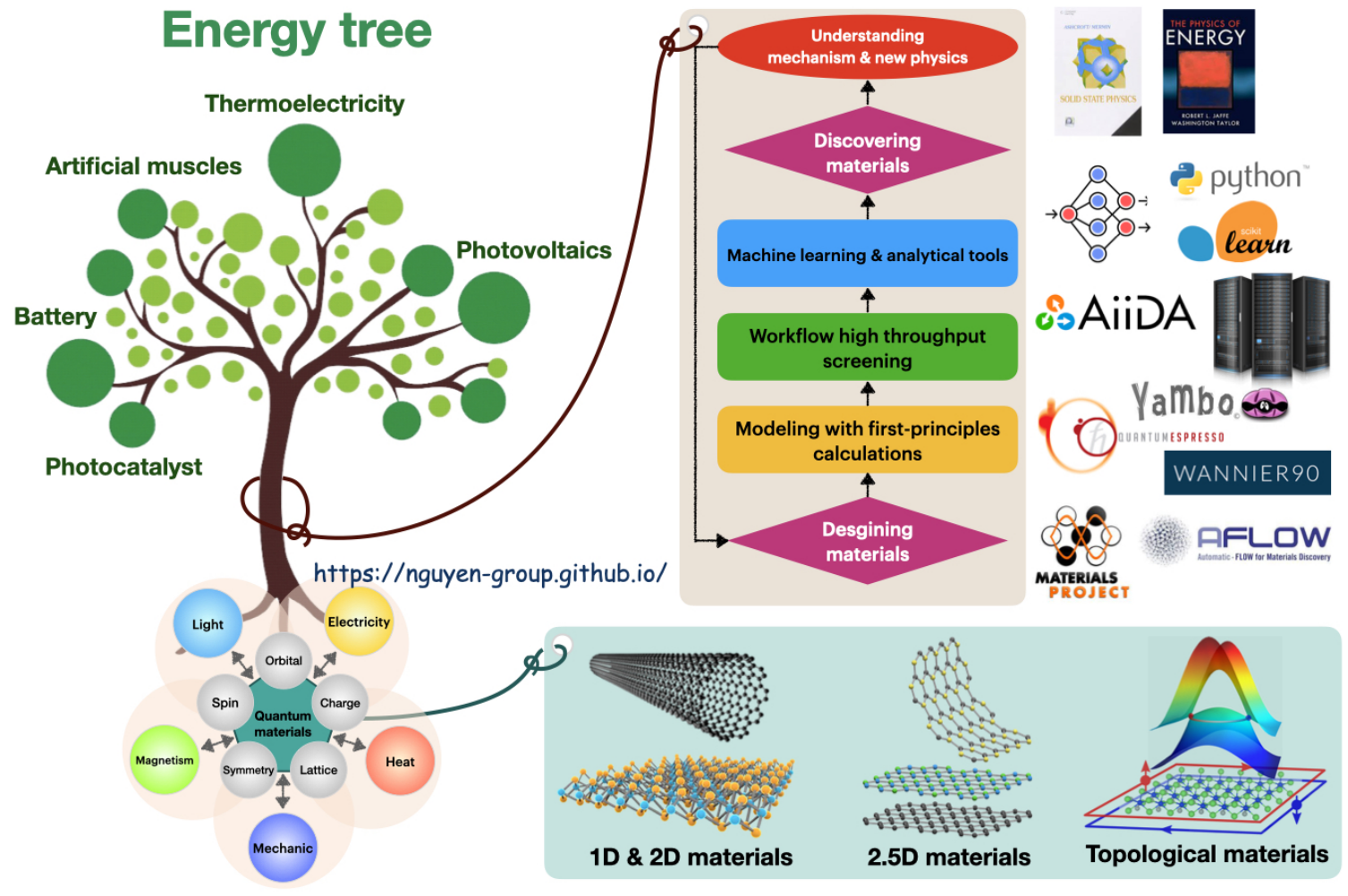AI/ML for Materials

Keywords: Graph neural network, Diffusion model, High-throughput calculation
AI and Machine Learning (ML) are revolutionizing materials science, enabling faster discovery, design, and optimization of materials with desired properties, by leveraging data-driven approaches to predict properties and identify optimal compositions and structures.
AI-driven materials design
Historically, materials discovery has mostly relied on the Edisonian trial and error approach. However, such a traditional process becomes increasingly time-consuming, leading to material from laboratory to market can take many years and is very expensive. Thus, this project aims to accelerate the exploration, design, and discovery of high-performance and low-cost quantum materials, such as 2D or topological materials, for energy-efficiency applications, including thermoelectricity, photocatalysis, and low-power electronic devices. We call this “Energy Tree”.
The integrated approach will combine the DFT calculations with high-throughput and artificial intelligence/machine learning (AI/ML). Compared to traditional materials discovery, the integrated approach has the potential to substantially reduce the experimental efforts needed to identify promising materials with target functionalities for the new energy quantum materials.
Selected Publications
- N. T. Hung, R. Okabe, A. Chotrattanapituk and M. Li, Universal ensemble-embedding graph neural network for direct prediction of optical spectra from crystal structure, Adv. Mat. 2409175-1-11 (2024).
- N. T. Hung, A. R. T. Nugraha and R. Saito, Quantum ESPRESSO Course for Solid‑State Physics, Jenny Stanford Publishing, New York, 372 Pages, (2022).